

 Wine drinking doesn’t really have any seasons. With one big exception. Rosé wines.
Wine drinking doesn’t really have any seasons. With one big exception. Rosé wines.
I have decided never to recommend a rosé to anyone. Sounds hard? Maybe even narrow-minded?
Many years ago, I was totally against rosé wines and considered it more or less as an unnecessary wine. Then I discovered that actually quite a lot had happened with this wine, and it was perhaps time for reconsideration.
So I gave rosé wines a fair chance, tasted a lot and discovered many pleasant wines.
And at the same time rosé wines became really trendy (not thanks to me however) and every single wine writer who earlier, like me, had rejected the pink colour, began to assure his readers that rosé was now being drunk also by the most serious wine lovers.
Today one can hardly pick up a wine publication without reading about the excellent quality that many rosé wines have now reached.
Yes, of course, a rosé can be a good wine. But hardly outstanding. And the colour is often beautiful. But, I’m back at my original opinion, that it is an unnecessary wine for me.
The ironic thing with rosé wine, that hardly ever get above the level of “pretty decent”, is that it is actually one of the most difficult things for a winemaker to make. Harder than both white and red in many ways. So why do they bother? Simple, it sells well.
Many wine writers try to convince us that there are times when you cannot drink anything else than rosé. I disagree.
A sunny afternoon on a terrace in Provence? Possibly, but for me, wine is for food (and an occasional aperitif). I very rarely drink wine just like that in the middle of the day. I really do need to make some concessions to my poor liver.
And with a meal I cannot even with the greatest effort think of a time when I really want a rosé more than a white or a red. I actually drink vin gris (an extremely light rosé) sometimes when I go to a Moroccan restaurant and eat couscous. The wine list usually isn’t brilliant and the Moroccan vin gris is usually the best (and sometimes the only) option, and that’s OK. But otherwise, there are so many lovely white wines and light red wines out there and I will still not be able to taste them all, even if I do ignore my liver.
And how long my decision on recommendations will last is of course another matter.
Britt & Per
PS: Recommend to your friends to read the Brief!
What’s on at BKWine Tours
- Bordeaux, September 23-27
- Douro Valley, October 21-25
- Chile and Argentina in South America, February 6-21, 2016
- South Africa, February 26 – March 7, 2016
For more information please contact us on email or on phone (we’re on French time), or go to our wine travel site on www.bkwinetours.com!
We also make custom designed wine tours – on-demand tours for you and a group of friends, for your company (maybe to scout new winegrowers?), for a special event… We can combine winery visits and wine touring with other activities: gastronomic workshops, visit to an oyster farm, truffles hunting, cheese making, and more. More info on the custom designed and bespoke BKWine wine tours and travel here!
Wine tours in Finnish: We also do wine tours in Finnish. And in German, Norwegian, Spanish…
Do you want the latest news and updates on our wine travel activity? Subscribe here! (Second alternative BKWineTours.com)
From the World of Wine
Dramatically reduced vineyard surface in Beaujolais
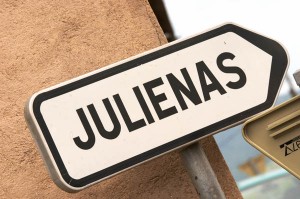 The Beaujolais appellation has lost an average of 500 hectares per year over the last 10 years. The surface has gone from 9 676 hectares in 2005 to 5 190 hectares in 2014. For the Beaujolais Villages appellation it is the same thing. 2 200 hectares have been torn up in ten years, more than a third of the appellation. Sales are decreasing steadily, particularly in France. Export is also decreasing even though the export market buys more Beaujolais and Beaujolais Villages than the French do.
The Beaujolais appellation has lost an average of 500 hectares per year over the last 10 years. The surface has gone from 9 676 hectares in 2005 to 5 190 hectares in 2014. For the Beaujolais Villages appellation it is the same thing. 2 200 hectares have been torn up in ten years, more than a third of the appellation. Sales are decreasing steadily, particularly in France. Export is also decreasing even though the export market buys more Beaujolais and Beaujolais Villages than the French do.
What is happening? Don’t we want Beaujolais wines any more? The truth is probably that we want to drink good Beaujolais wines and the producers who deliver such have its loyal clientele. While the others, often farmers who supply grapes or wine to the large négociants, get paid the minimum and eventually discover that they cannot make a living this way. Read more: vitisphere.com
New wine drinkers in China
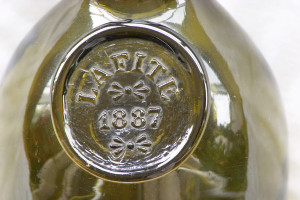 When China began to drink wine it was red, expensive Bordeaux that was sought after and most preferably Château Lafite-Rothschild. And the bottles were given away as gifts. This was some years ago now, and the Chinese market has evolved a lot. Now there is a new generation of wine drinkers in China. These are young Chinese who are buying and drinking wine. The wine they drink is still imported, and often French, but much cheaper.
When China began to drink wine it was red, expensive Bordeaux that was sought after and most preferably Château Lafite-Rothschild. And the bottles were given away as gifts. This was some years ago now, and the Chinese market has evolved a lot. Now there is a new generation of wine drinkers in China. These are young Chinese who are buying and drinking wine. The wine they drink is still imported, and often French, but much cheaper.
They have probably learned to drink wine at business dinners, but then continue to do so in their spare time. And because they pay the wines themselves they naturally look at the price. This has opened up the Chinese market to more normal priced wines. And it shows in the French export figures. Both “ordinary” Bordeaux wines and Languedoc wines are selling very well today in China.
Wine Intelligence has made a study of the Chinese wine consumers: Wine Intelligence China Portraits 2015 (pdf).
Book your autumn wine tour now: Bordeaux or Douro Valley
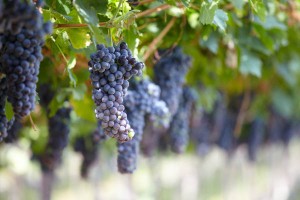 A short note on that it is high time to book your autumn tour, the wine tour that you really want to go on when days are getting shorter. We have two exciting tours on this autumn’s scheduled English language program:
A short note on that it is high time to book your autumn tour, the wine tour that you really want to go on when days are getting shorter. We have two exciting tours on this autumn’s scheduled English language program:
Bordeaux, classic of the classics
Douro Valley, maybe the world’s most spectacular wine landscape
The book-before date is approaching fast. Book your wine tour now!
And I can already now tell you about the winter wine tours. There will be two long-distance tours. First a wine tour to Argentina and Chile in South America and then a wine tour to South Africa. If you want to come with us to South America I advise you not to hesitate for too long. It is already filling up.
Harvest Report from Mendoza
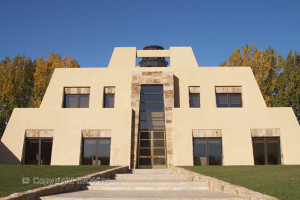 While spring is at its finest in France, the well-known producer Catena Zapata on the other side of the globe, in Mendoza in Argentina, has compiled a harvest report for 2015. In Mendoza they call 2015 a Bordeaux-year. The summer was cool, autumn brought some rain and the result was generally low alcohol levels and high acidity in the red wines. The best Malbec wines in 2015 have an elegance achieved only in cool year, says Laura Catena in the report. Thanks to the warm winter harvest was 10-14 days earlier than is customary and early ripening grapes, like Chardonnay and Pinot Noir, did very well.
While spring is at its finest in France, the well-known producer Catena Zapata on the other side of the globe, in Mendoza in Argentina, has compiled a harvest report for 2015. In Mendoza they call 2015 a Bordeaux-year. The summer was cool, autumn brought some rain and the result was generally low alcohol levels and high acidity in the red wines. The best Malbec wines in 2015 have an elegance achieved only in cool year, says Laura Catena in the report. Thanks to the warm winter harvest was 10-14 days earlier than is customary and early ripening grapes, like Chardonnay and Pinot Noir, did very well.
Catena had no problem with hail this year. Normally hail is a recurring curse in Mendoza where producers invest a lot of money in hail nets. Most difficult this year was, according to Catena, Cabernet Sauvignon which was affected by rot in some places, especially in the clay soils of Lujan de Cuyo and Maipú. In well-drained soil and in vineyards pruned for low yields, it did, however, better. Read more: catenawines.com
Are you curious to know more about South American wines? Join us on a wine tour to Argentina and Chile and you will taste many top-quality wines, delicious food, and enjoy lovely landscapes. You will travel together with both Britt and Per.
The forgotten Catalonian grapes found by Torres
The large wine company Torres of Catalonia in Northern Spain continues its work with so-called forgotten grape varieties. Torres has been working on this project in Catalonia for 30 years now. One reason for the project is that they hope that some of these grapes will prove to be well suited for the future when the climate gets warmer and warmer.
Torres prestige wine Grans Muralles already includes the grape Querol (named after the village where Torres found it). Querol has shown to maintain acidity, even at very hot temperatures. Other local, forgotten grapes that Torres has great expectations for are Gonfaus and Moneau and white grapes Selma and Pirene. They just need to get their approval from the Spanish authorities.
These forgotten grapes Torres is now reviving vanished more or less during the ravages of phylloxera in the late 1800s. Read more: thedrinksbusiness.com.
Early and excellent harvest in South Africa
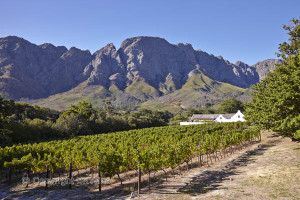 The harvest in South Africa began early this year. The growing season was dry and the producers had very little problems with diseases and rot. They could harvest beautiful and healthy grapes. Most of them are pleased with both the quality and the quantity. There are even voices saying that this will be an exceptional vintage. The harvest in Stellenbosch was somewhat smaller than last year, and is widely regarded as the best in many years.
The harvest in South Africa began early this year. The growing season was dry and the producers had very little problems with diseases and rot. They could harvest beautiful and healthy grapes. Most of them are pleased with both the quality and the quantity. There are even voices saying that this will be an exceptional vintage. The harvest in Stellenbosch was somewhat smaller than last year, and is widely regarded as the best in many years.
The harvest in 2015 in South Africa is estimated at 11.6 million hectolitres. But that does not mean that all this becomes wine. South Africa is a major producer of both grape juice and brandy and the two categories are included in the figures. In 2014, 81.5% of the harvest became wine, 4.1% wine for brandy, 11% went to other distillates and 3.4% was sold as grape juice and grape juice concentrate. Read more: wine.co.za
Even if winter is far away now it will come. Forget winter and discover instead South Africa’s top wines and exciting gastronomy on a wine tour, in the middle of winter in March, but in warm summer weather in South Africa, with BKWine. You will travel with both Britt and Per.
Calories on the wine label? European Parliament says yes. Wine producers say NO
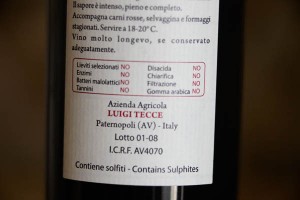 Do we need to know how many calories a bottle of wine contains? Spontaneously, I would say no. I already know that there are calories in alcohol, as there are in cakes. You just make your choice. But now the European Parliament has got it into its head that it should be mandatory to print the number of calories on the bottle labels of wine and spirit. The Parliament has demanded that the European Commission present a proposal as soon as possible. Ideally, the Parliament wants this to become law already in 2016
Do we need to know how many calories a bottle of wine contains? Spontaneously, I would say no. I already know that there are calories in alcohol, as there are in cakes. You just make your choice. But now the European Parliament has got it into its head that it should be mandatory to print the number of calories on the bottle labels of wine and spirit. The Parliament has demanded that the European Commission present a proposal as soon as possible. Ideally, the Parliament wants this to become law already in 2016
I think maybe the Parliament needs to dampen its hope a little. The French wine producers (and also, I’m sure, the Italian, Spanish, etc.) are totally against the proposal. And we know from experience that the EU Commission has some problems resisting pressure from the wine industry. The wine producers argue that a calorie indication on the label would bring substantial costs that producers cannot possibly cope with. Probably they don’t want consumers to be reminded that wine contains calories either.
Perhaps a calorie indication would entail that all artificial increase in alcoholic strength disappears? Like chaptalisation and enrichment with concentrated grape must? That would be a positive thing indeed.
But poor Sauternes and other sweet wines. They probably contain tons of calories. Read more: vitisphere.com
The Rioja region newsletter interviews BKWine
The Rioja wine region publishes a regular newsletter on what is happening in the region and with recommendations on wines and what to do. Recently they did an interview with Per at BKWine. They had heard of our wine tour in Rioja this past autumn and wanted to know what we thought. “In short, Rioja is today a very exciting wine region where there is everything from good, balanced everyday wines to very ambitious prestigious wines of high international standard. That becomes very clear when you travel around the vineyards!”, was the conclusion. Read more about the interview on the BKWine Travel Blog: Interview on wine and travel in the Rioja newsletter, with BKWine.
If you are curious about Rioja and its wines you can come on one of our wine tours. Currently we offer Rioja as a custom designed wine tour for private groups in English and as a scheduled tour for Scandinavian customers.
The 2014 vintage in Rioja: officially ”good”
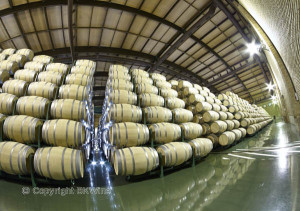 The official control organisation in Rioja has after extensive tastings deemed the 2014 vintage to be “good”. Everything did indeed look very good when I was there in October last year. They are very satisfied both with the quality and the quantity of the harvest. The volume is up compared to last year: 2.9 million hectolitre. The vast majority is red wine, 2.6 Mhl. They also make a bit of white, 0.2 Mhl, and even a dash of rosé, 0.15 Mhl. 2014 also marks the 30th anniversary of when they introduced an official quality rating of the vintage. It is based on extensive tank sampling and tastings by a 140 person strong professional tasting panel. This is one of the things that is the basis of the “calificada” in the Rioja classification of D.O.Ca. Read more on how this is done in Rioja: riojawine.com
The official control organisation in Rioja has after extensive tastings deemed the 2014 vintage to be “good”. Everything did indeed look very good when I was there in October last year. They are very satisfied both with the quality and the quantity of the harvest. The volume is up compared to last year: 2.9 million hectolitre. The vast majority is red wine, 2.6 Mhl. They also make a bit of white, 0.2 Mhl, and even a dash of rosé, 0.15 Mhl. 2014 also marks the 30th anniversary of when they introduced an official quality rating of the vintage. It is based on extensive tank sampling and tastings by a 140 person strong professional tasting panel. This is one of the things that is the basis of the “calificada” in the Rioja classification of D.O.Ca. Read more on how this is done in Rioja: riojawine.com
Official launch of the two winter wine tours: South America and South Africa
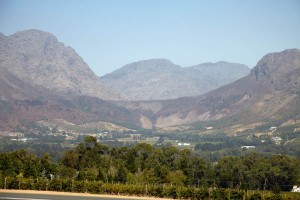 We recently published the press release on our winter wine tours. There will be two new wine and food tours the coming winter season, both to far-away exotic destinations: Chile and Argentina in South America, and to South Africa.
We recently published the press release on our winter wine tours. There will be two new wine and food tours the coming winter season, both to far-away exotic destinations: Chile and Argentina in South America, and to South Africa.
The wine and food tour to South America will take place on February 6-21, 2016. The tour brings the traveller to Chile and Argentina and to the two countries’ most important wine regions. The tour starts in Santiago de Chile and ends in Buenos Aires in Argentina. Along the way there will be visits to Valparaiso, Santa Cruz, and Mendoza. A unique coach trip over the summits of the Andes is also included.
The wine and gourmet tour to South Africa will take place on February 26 to March 7, 2016. The tour includes a few days in beautiful Cape Town with many famous sights and a visit to the nature reserve around the Cape of Good Hope and Cape Point. The focus is on the wine regions of South Africa, Stellenbosch, Franschhoek, Swartland, Paarl, and on the gastronomy.
Read the whole press release here: Two exclusive long-distance wine tours, South America and South Africa, launched by BKWine. (You can also find all the details on the travel programs there.)
Dancer turned winemaker: we taste Rodney Strong’s Californian wines
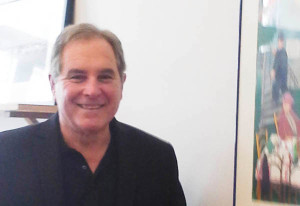 “When Rodney Strong was a ballet dancer at the Lido in Paris his interest in wine took off seriously. He decided to start a second career as a winemaker in the relatively unknown Sonoma County in 1959. It was the thirteenth winery in Sonoma at the time, with much pioneering work to do. Most neighbours were dairy farmers and fruit growers.”
“When Rodney Strong was a ballet dancer at the Lido in Paris his interest in wine took off seriously. He decided to start a second career as a winemaker in the relatively unknown Sonoma County in 1959. It was the thirteenth winery in Sonoma at the time, with much pioneering work to do. Most neighbours were dairy farmers and fruit growers.”
“The first Chardonnay vines on Chalk Hill were planted in 1962. Six years later Rodney Strong bought land in the Russian River Valley to plant pinot noir vines in what today are some of the property’s best vineyards.”
Read BKWine’s reporter Mikael Karlin’s article, including six wine tasting notes, on BKWine Magazine: Six wines from Rodney Strong Vineyards with winemaker Rick Sayre.
Alsace: good food, pretty villages and excellent wines | Britt on Forbes
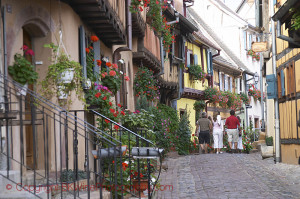 In Britt’s latest article on Forbes she gives you an introduction to this beautiful wine region and a some suggestions for wines to try and places to visit. Here’s the introduction:
In Britt’s latest article on Forbes she gives you an introduction to this beautiful wine region and a some suggestions for wines to try and places to visit. Here’s the introduction:
“Alsace is so perfect that you sometimes wonder if it’s for real. Well, yes it is. This is not Disneyland although the fairy tale villages along the Alsatian route de vin, the wine road, almost make you believe it is. But speak to the winegrowers working the steep hills covered with vines and they will most definitely tell you that making wine in Alsace is hard work and nothing to do with fairy tales.”
Read more on this on BKWine Magazine: Combine great wine, good food and charming villages and you have Alsace | Britt on Forbes.
Grape expression in the wines from Black Stallion
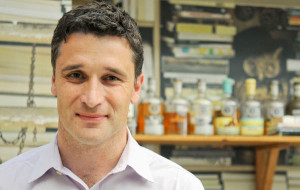 “Black Stallion Estate Winery has an interesting product portfolio, starting with the single variety wines including chardonnay, pinot noir and syrah in the 25-40 dollar range and ending with cabernet blends at the 180 dollar level. The wines are not explicitly terroir driven. They rather focus on producing the best that the grapes can be persuaded to give and to highlight what is typically Napa.”
“Black Stallion Estate Winery has an interesting product portfolio, starting with the single variety wines including chardonnay, pinot noir and syrah in the 25-40 dollar range and ending with cabernet blends at the 180 dollar level. The wines are not explicitly terroir driven. They rather focus on producing the best that the grapes can be persuaded to give and to highlight what is typically Napa.”
BKWine’s reporter Ulf Bengtsson writes more about his meeting with the winemaker on BKWine Magazine: A leisurely afternoon with Californian Black Stallion Estate Winery and the winemaker Ralf Holdenried.
Four wines from Badenhorst Family Wines with winemaker and owner AA Badenhorst
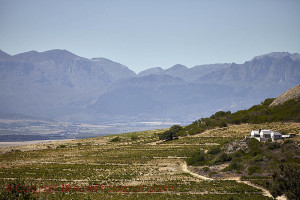 “’I may not make the world’s best wines, but the most natural’ was Adi Badenhorst’s opening line. And so it is, bunches are not destemmed, the wine ferments with natural yeasts and the only additive is a little sulphur. He says he cannot afford machinery. He says he cannot afford the certification of organic wine. And sometimes he does not tell you quite the whole truth.”
“’I may not make the world’s best wines, but the most natural’ was Adi Badenhorst’s opening line. And so it is, bunches are not destemmed, the wine ferments with natural yeasts and the only additive is a little sulphur. He says he cannot afford machinery. He says he cannot afford the certification of organic wine. And sometimes he does not tell you quite the whole truth.”
BKWine’s reporter Mikael Karlin met one of South Africa’s most talked about winemakers when he came to Stockholm. Read more on BKWine Magazine: Adi Badenhorst, South Africa: “maybe not the world’s best wine, but the most natural”.
The olive tree is like the vine, only different
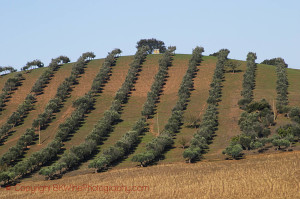 “Like the grapevine the expansion of the Roman Empire spread the olive tree across Europe. But not quite as far north as the vine since the olive tree has greater demands warm weather.”
“Like the grapevine the expansion of the Roman Empire spread the olive tree across Europe. But not quite as far north as the vine since the olive tree has greater demands warm weather.”
“The olive tree thrives best in areas where the summers are long, hot and dry and winters are short but cold enough to kill any pests that can otherwise ruin the fruit and the trees. Mediterranean countries have an ideal climate, and here we find most of the world’s olive production. Spain has the largest production, followed by Italy and Greece. France has a small but high-quality olive oil production.”
Read more on olive oil in Britt’s article on BKWine Magazine: The Secrets of Olive Oil.
Delicious cabernet + impressive chateau = Classic Bordeaux
”What do you most associate with Bordeaux, if not the grape cabernet sauvignon and the chateaux of the Médoc? Among red grapes there is hardly any grape that is so well-known as cabernet sauvignon. Every single wine country all over the world with some self-esteem has some cabernet sauvignon vineyards.”
But its home country is Bordeaux.
“A trip in the Medoc is a bit like a storybook trip. The beautiful palaces, chateaux, are located almost wall-to-wall and all that we have read about in wine books are here.”
Britt gives you an introduction to the most classic of classic wine regions on BKWine Magazine: Classic Bordeaux, an introduction to the Medoc. (Including quite a few pictures of all these classics!)
But to really experience Bordeaux wines the best thing to do is to go there. Join us at BKWine on a wine tour to classic Bordeaux in September.
Don’t be an egoist! Share with your friends and other wine enthusiasts! Forward the Brief to your friends! Suggest that they sign up for a free subscription !
© Copyright BKWine








